When You Feel Stressed, These 7 Nervous System Regulation Techniques Will Help

If you have ever experienced stress in your life, then you need nervous system regulation. Can you list the four main stress responses? A stress response can be related to physical, chemical and/or emotional stress.
More than likely, you know of at least two types of stress responses: fight and flight. And perhaps you added freeze. Those three responses are somewhat self explanatory.
The fourth main stress response is known as fawn.
The fawn stress response can be explained as someone who, when feeling pressured or attacked, will deflect their own needs in order to take care of another, oftentimes for the person applying the stress. The fawn responder may have difficulty saying no and can be prone to self-sabotage or self-sacrifice in order to keep the peace and deflect a situation that could have escalated.
These self defense reactions – or trauma responses – induce a cascade of physiological processes, including increases in adrenaline, cortisol, and other hormones that can tax organs like your adrenals. More on this below, so keep reading!
Stress Responses Start With the Sympathetic and Parasympathetic Nervous System
As a quick reference, the sympathetic nervous system is responsible for your fight or flight response. The sympathetic nervous system is activated through stress, when you are in danger, or when you’re engaging in physically (or emotionally) demanding activities.
The parasympathetic nervous system, on the other hand, is responsible for your “rest and digest” functions of the body. It is responsible for the “life sustaining” functions of your body (such as digestion) and is activated when you feel calm and safe.
For more about the parasympathetic nervous system, read: The Parasympathetic Nervous System: Here’s How It Affects Your Wellbeing
To be in “fight or flight” (and “freeze and fawn”) is synonymous with being in sympathetic nervous system response, or in other words, when your nervous system is “upregulated.” If you practice yoga, you can learn about how your physical yoga practice affects the parasympathetic nervous system.
This Is How Yoga Impacts Your Fight or Flight Response, According to Science
It’s common today to live in a chronically upregulated state. In addition to physical, chemical, and emotional stress, there are also environmental stressors, and even energetic stress that can cause chronic upregulation for the nervous system.
Many people who are stuck in an upregulated or “fight or flight” sympathetic nervous system response have disruptions in their digestive processes
We also have additional stressors that are abundant in our tech-addicted society, including overstimulation from blue light, sounds, and images, among others. All of which leave us stuck in the “on” position.
So how and when do you switch “off?” One way is through mindfulness, like meditation, and also movement, such as your yoga practice.
Learn About the Parasympathetic vs. Sympathetic Nervous Systems and How Yoga Affects Each
The flipside of the sympathetic nervous system (upregulation) is the parasympathetic nervous system. As mentioned above, the parasympathetic nervous system controls digestion as well as healing and repair for your cells and your body.
Think of it this way – if you need to fight or run away, blood needs to flow to your arms and legs – which means it flows away from your major organs like the digestive system. If you have decreased blood flow to your digestive organs, you won’t be able to assimilate the nutrients from your food very well.
Think of an upregulated (sympathetic) nervous system as the gas pedal, and a down regulated (parasympathetic) nervous system as the brakes.
Many people who are stuck in an upregulated or “fight or flight” sympathetic nervous system response have disruptions in their digestive processes (myself included!).
Follow These 5 Tips for Naturally Better Digestion
What is one of the keys for healing your digestion? Training your nervous system to down regulate! In other words, using nervous system regulation techniques. Keep reading to learn about our favorites!
But first, here’s a bit more context about each of the four main stress responses.
Learn How to Identify Each of the Four Main Stress Responses When You Experience Them
Let’s learn about the four stress responses in greater detail and how to identify if you are stuck in “fight,” “flight,” “freeze,” or “fawn.” I’ll also share some practices for each response to help regulate your nervous system and come back into balance in the next section.
Flight and Fight Stress Responses
From a biological standpoint, flight and fight are the mobilization of energy and resources away from the vital organs and into the muscles and connective tissues responsible for running away from or fighting with whatever is threatening.
In order to flee or fight, a cascade of hormones and neurotransmitters (and other automatic responses occur) – including a rush of adrenaline, circulation to extremities, heightened senses, and an increase in cortisol.
The Freeze Stress Response
The freeze response occurs when it is biologically more productive to freeze “dead in our tracks” in order to ward off a threat.
Someone stuck in the freeze response may feel a physical sense of numbness with stiff and heavy limbs that is immobilizing, despite being acutely aware of their surroundings.
Oftentimes accompanied by a sense of dread, they may hold their breath in the freeze state and feel unable to move or make decisions. Freezing can also be triggered by anxiety and panic attacks, causing them to have “analysis paralysis” and the inability to respond.
The freeze response is also associated with disassociation, creating an environment where they no longer feel safe or grounded in their body. “Freeze” is a trauma response that often requires some physical movement to navigate out of; for example shaking the limbs, bouncing the heels, arm circles, or a walk outside can help mobilize the stuck energy that occurs during freeze.
The Fawn Stress Response
As mentioned above, the fawn trauma response can be thought of as the people-pleasing response, which occurs when the needs and wants of others are placed over our own needs – even at our personal detriment.
If you ignore your needs in order to take care of someone else, especially within a toxic environment or relationship, you may be exhibiting signs of a fawn trauma response which can be a byproduct of and also result in dis-regulation in the nervous system.
Often caused from a lack of healthy personal boundaries, an individual who exhibits the fawn trauma response can benefit from bringing awareness to the tendency to sacrifice themselves for others and learn to care for themselves in the way that they have cared for others in the past (without self-sacrifice).
Even those who have never experienced T/trauma or abuse can experience any or all of the four responses described above.
If you survived the global COVID pandemic, then you have experienced some type of trauma! The inundation of fear, stress, illness, division, isolation, (the list goes on) has been traumatic to varying degrees for all who have navigated through the pandemic.
If we weren’t a chronically up-regulated society prior to the year 2020, we most definitely are now. Which, in my opinion, has sparked this incredible wave of awareness and interest into nervous system techniques and hacks to bring more balance and awareness inwards.
How to Identify When You Have Chronic Upregulation – And the Importance of Nervous System Regulation
If you consider yourself “Type-A” or “go-go-go” or a perfectionist, then your nervous system may be stuck in chronic upregulation.
If you track your heart rate variability (HRV), this would be indicated by a chronically low HRV. If you struggle with anxiety and/or other mental health challenges, or if you have a history of trauma, then learning about nervous system regulation techniques can be incredibly helpful for you on your healing journey.
Think of the parasympathetic nervous system as your car’s brakes. If you’re always accelerating or speeding, then you never have to take your foot off the gas to hit the brakes. But if you’re driving along at any speed and then need to slow down or stop, your foot goes off the gas and onto the brakes.
Think of an upregulated (sympathetic) nervous system as the gas pedal, and a down regulated (parasympathetic) nervous system as the brakes. You have to slow down sometime and if you don’t choose to, your body will likely force you to. That’s when you may get sick or injured and have no choice but to take it easy so your healing can take place.
The body is a self-healing and self-regulating organism. So, if you remove interferences, then the power that made the body can also heal the body. In order to remove interferences, first we have to slow down, full stop, to relax and rest. The energy of being always on the go, always busy, always moving on to the next thing is in itself an interference that inhibits healing . . .
So what happens when we slow down?
Physiologically speaking, the heart rate slows, breath deepens, blood flows away from muscles / extremities and back to your organs. All kinds of internal physiological processes begin to occur, including cellular repair and assimilation of nutrients.
Think about all the ways your body cleans and heals itself internally when you’re asleep. It’s incredible what goes on to keep you healthy when you sleep, which is one of the reasons we need so much rest when healing from a sickness or recovering from an injury.
There are other times your body should be in a relaxed state that promotes feeling restful, and that’s during and after eating, first thing in the morning when you are getting ready for the day, and in the evening when you are getting ready for bed.
Stimulation from TV’s, computers, tablets, video games, and cell phones all switch us “on” whether we realize it or not.
Addicted to Your Devices? Here’s How to Combat the Negative Effects of Technology
7 Nervous System Regulation Techniques You Can Try Today
Here are seven techniques for nervous system regulation that you can experiment with to see which work for you. Then, you can incorporate them into your day or weekly routine to bring your nervous system back into balance, whether you’re experiencing flight or fight, freeze or fawn stress responses.
1. Morning Oral Hygiene Routine
Tongue scraping is rooted in Ayurvedic health and removes the bacteria on your tongue that causes bad breath. After, rinse your mouth out by gargling with water, and try to vocalize while gargling. (You can also try oil pulling for added hygienic benefits).
5 Accessible Ayurvedic Wellness Rituals for Natural Health and Beauty
This oral hygiene routine stimulates and tones the vagus nerve and helps to regulate the nervous system and is especially good for assisting with digestion.
Learn All About the Vagus Nerve and How It Can Calm Your Anxious Nervous System
2. Cold Therapy
Cold therapy (often referred to as cryotherapy) is a nervous system regulation technique where the body is exposed to cold temperatures. Cold therapy can be used in a variety of ways – including using ice packs and cold compresses, ice baths (also called cold plunges, which are becoming increasingly popular in the wellness space), and cryotherapy chambers (brief exposure to extremely cold temperatures).
So why the cold?
Cold temperature works to constrict the blood vessels and reduce blood flow to the affected area, which can help minimize swelling and numb pain receptors, providing temporary relief. But specifically for the purpose of regulating the nervous system, cold therapy can increase your circulation, reduce stress, boost mental resilience, and potentially even improve your immune function through increasing white blood cell count.
5 Benefits of Cold Plunging That Might Just Motivate You to Try Cold Water Therapy
It’s important to use cold therapy appropriately, since prolonged exposure to extreme cold can lead to tissue damage or frostbite so be sure to follow recommended guidelines and consult with a healthcare professional before using cold therapy for specific conditions or injuries.
For some, myself included, being cold can bring on fight or flight stress response. While this is a part of cold therapy, I’ve made adjustments to make this practice more suitable for me by doing small cold therapy treatments like splashing my face with ice cold water, or putting my feet and ankles in an ice bath.
Instead of full body immersion, I feel more safe using cold therapy on one part of my body at a time and notice a difference! I share this because you might too.
3. Try Humming
Humming, as in the humming sound we can make? Yes! Humming tones the vagus nerve which in turn helps to regulate your nervous system. Ever notice how happy people tend to hum? It is calming and soothing, and hence is an effective self-soothing technique.
Boost the calming effects of humming with Humming Bee Breath. This is a form of breathwork (in Sanskrit, it’s called Bhramari pranayama) that’s simple to do. In a comfortable seated position with your eyes closed or a soft gaze, inhale through your nose and hum through your entire exhale (also through the nose). Do this for five rounds and notice the difference!
It’s not just humming though. Singing, chanting, even praying out loud – all of these use your vocal cords which in turn stimulates and tones the vagus nerve. Driving gives me anxiety, and I feel up-regulated while driving. When this happens, I hum, sing, or pray out loud. Whether you prefer to hum, sing, or chant outloud, try it and see how you feel.
4. Do Restorative Yoga
Gentle movement that mobilizes the body in a safe way will help re-regulate your nervous system and is especially helpful when you’re stuck in the freeze response or sympathetic nervous system (up-regulation).
Restorative Yoga hits the reset button for your nervous system. The gentle, supported postures activate your parasympathetic nervous system, often referred to as the “rest and digest” mode. Restorative Yoga uses props like bolsters or pillows and blankets so your body can fully relax as you sink into those comfy props, and that’s when the magic happens.
In this state of relaxation, the body releases tension, and your nervous system gets a chance to recalibrate. The practice emphasizes deep, diaphragmatic breathing, which signals to your brain that everything is A-OK. This intentional breathwork helps reduce the fight-or-flight response associated with the sympathetic nervous system, fostering a sense of calm.
Take a Restorative Yoga Class Now!
Choose from dozens of Restorative and Yin Yoga classes with knowledgable teachers on YA Classes.
5. Practice Box Breathing
Box breathing, or Sama Vittri Pranayama, uses a set length of equal inhalations, exhalations and breath retentions. Try it! Inhale through your nose for a count of 4, hold your breath for a count of 4, exhale out your nose for a count of 4, then hold your breath out for a count of 4. This makes one full round. Repeat for 3-5 rounds.
Another breath practice is to extend the exhale for longer than the inhale, which signals the sympathetic nervous system and helps the body to relax. You can also make an audible sigh when you exhale to assist the body in relaxation.
Try these different variations to see which feels best for you! And remember that you will feel different day to day, so these breathing variations may have different results day to day.
6. Self-Massage
Self-massage can be incredibly therapeutic and is a fantastic, feel-good nervous system regulation technique.
Try this: softly massage your forehead, cheekbones, and jaw using a gentle touch. Then, give some love to your ears, behind your ears, and the sides of your neck. Move your hands in circular motions to gently massage your chest and heart center, and don’t forget underneath your arms. Now, for your abdominal area, move in circles, going up your right side and down your left side – just follow the same direction as your digestion.
Self-massage is more than a luxurious treat; it’s also a direct line to your nervous system’s chill-out zone. The tactile sensation of touch signals to your brain that everything is okay, activating a shift from the stress-inducing sympathetic nervous system to the calming parasympathetic nervous system.
This same tactile sensation is what makes getting a massage so relaxing too. So, the next time you’re feeling a bit frazzled, consider either a DIY self-massage or perhaps treating yourself to receiving one by a massage therapist – your nervous system will welcome the calming vibes.
7 Lesser Known Benefits of Massage Therapy (As If You Needed More Reasons to Get a Massage)
7. Nighttime Sleep Hygiene Routine
The list began with a morning routine and the list ends with a nighttime routine! Getting adequate sleep consistently is paramount for nervous system regulation! Sleep hygiene is so important, and incorporating a routine around your sleep schedule can be immensely beneficial.
What is sleep hygiene? Practices and habits that promote good, quality sleep. These practices create an optimal sleep environment that fosters restful and uninterrupted sleep.
Here are a few ways to create your own sleep hygiene routine:
- Create a consistent sleep schedule
- Do things that calm you before bed
- Optimize your sleeping environment
- Limit screen time before sleep
- Avoid heavy meals and stimulants close to bedtime
Getting adequate sleep allows your body’s control center to take a breather. During those precious hours, your parasympathetic nervous system, the zen master of the nervous system, gets to shine.
It lowers your heartrate, relaxs your muscles, and promotes an overall sense of calm. Adequate sleep keeps the stress-inducing sympathetic nervous system in check while allowing the rejuvenating parasympathetic side to do its thing.
So the next time you’re debating whether to binge-watch another episode or catch those Zs, remember – your nervous system always votes for the beauty sleep option!
Nervous System Regulation Is Key to Maintaining Peace + Wellbeing
There you have it – 10 tools to incorporate into your daily/weekly practices – most of which are free and can be done with only a few minutes a day!
If you wake up in a panic or feeling rushed or hurried, it may be time to start a morning meditation and/or breathwork practice. These simple yet impactful practices can positively impact your physical, mental, and emotional health and also help regulate your nervous system.
To end, consider this: healing the nervous system is not something that happens over night. Life is constantly changing and incredibly unpredictable. No one is exempt from the highs and lows of life, and therefore these practices are not linear.
Having self-awareness of how you respond to life’s stressors and the ability to self-soothe and incorporate practices that work for you will become lifelong tools to help you ride the roller coaster of life!
All included information is not intended to treat or diagnose. The views expressed are those of the author and should be attributed solely to the author. For medical questions, please consult your healthcare provider.


This Month's Letter
From the Editor
Monthly motivation and food for
thought from our founder.


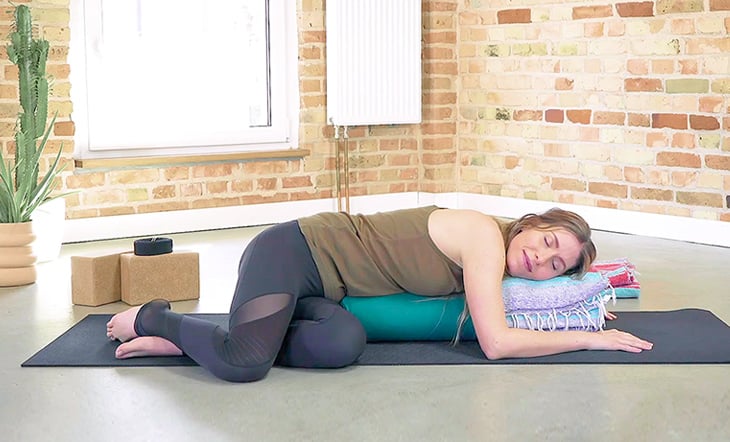
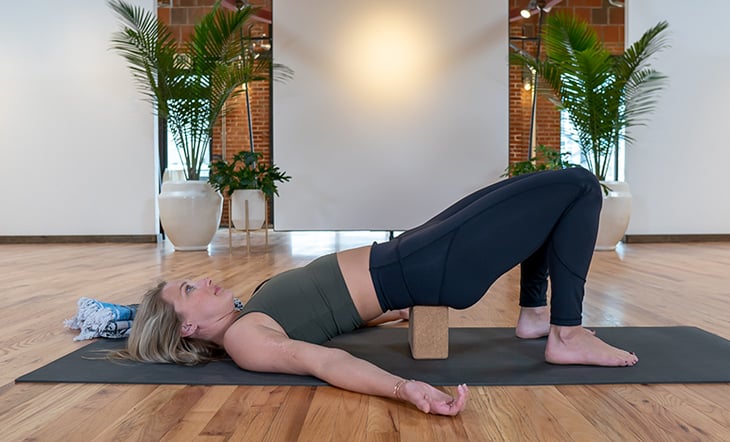


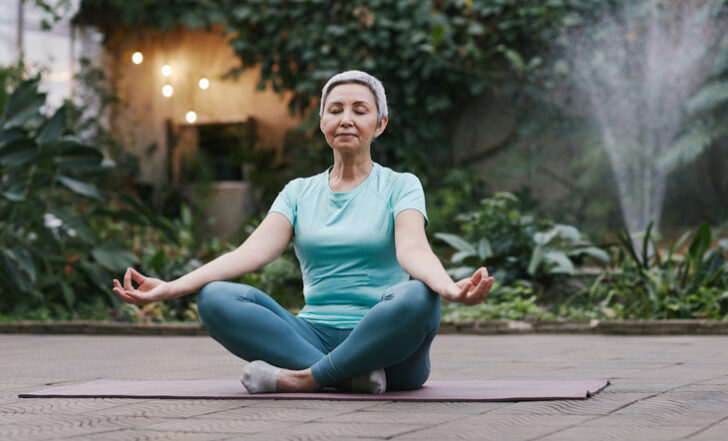
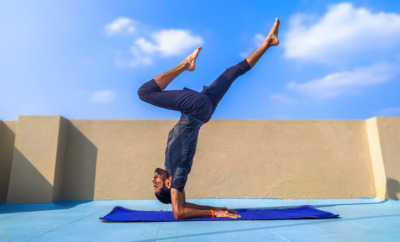
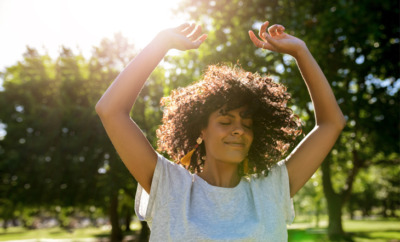







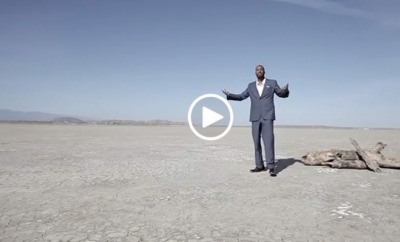


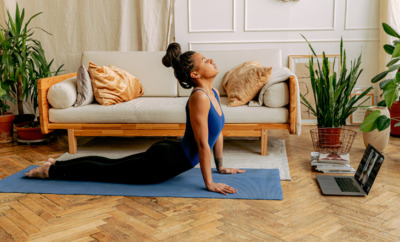










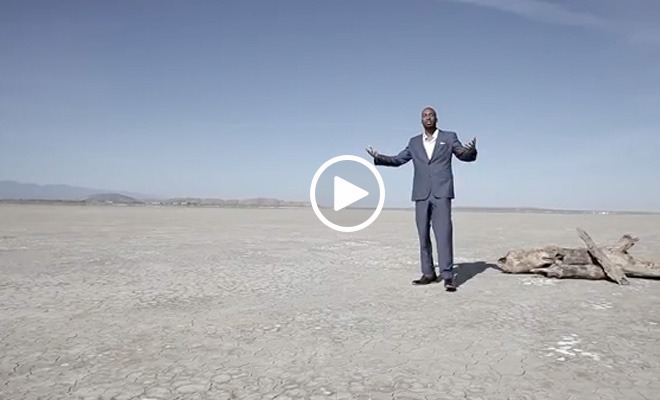




Comments